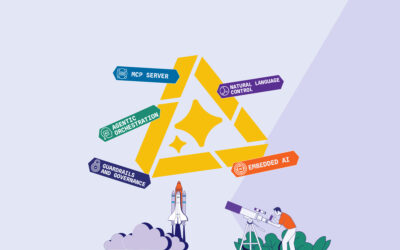COVID-19 has made insurance carriers, benefits providers, and brokerage firms more certain of the importance of digital transformation and forced others to re-evaluate their current digital capabilities
Can you believe that the first half of 2020 is over and that we’re already in June? For the insurance industry, this was supposed to be the year of big and exciting change. And change it has, for sure! But no one would have predicted that insurers could accept so much change so quickly, and without the endless vetting and deep-rooted consideration that’s been so typical of our industry.
If there’s a silver lining in COVID-19, it comes in the form of knowledge, and with that knowledge comes great power and responsibility.
So what have insurers learned?
- Nearly everyone’s 80-year-old grandmother (or 95 in my case) can and will learn to use Zoom so they can see their grandbabies and have a conversation face-to-face.
- People can and will use digital means to buy things — including their dinner and groceries — from places other than Amazon.
- Doing webchat isn’t nearly as difficult as many made it out to be.
- People can be productive working from home, even while entertaining little ones or being teachers.
- Eliminating all the running around from one meeting to another gives people time to really engage and interact with colleagues and clients to build better relationships.
Knowing all that, what’s most important is that insurers exercise their power and act on their responsibilities to customers.
In my first week in my new role as the marketing lead for EIS, Tony Grosso and I moderated a webinar for Voluntary Employee Benefits Board (VEBB) members. We discussed bridging the digital gap between brokers and their clients with Carroll Fadal, VP, chief sales officer at Texas Life, and Stephanie Perry, project manager, group benefits at The Hartford and VEBB chair. We also sought knowledge from VEBB members about how they are acting on their new responsibilities in the face of the #NewNorm.
Watch a recording of the webinar
- When asked to what extent this new working environment has pushed their company to reevaluate their current digital capabilities:
- 53% reported that it raised some awareness; meaning that they managed well during the current environment, but have a few areas that could use reevaluation
- 17% said they have struggled to be effective in some key functional areas and feel it is important to reevaluate their current digital capabilities
- When asked which projects now have a higher priority as a result of the current environment, the top three projects mentioned were:
- The creation or modification of insurance products
- Digital communication channels
- The development or enhancement of self-service tools
- When asked how urgent is the need to upgrade or replace benefit administration as a result of the current environment:
- 54% reported that these projects were already underway
- 21% stated that they are planning to start in the next three years
Now armed with the knowledge of where the gaps are within the organization, insurance carriers, benefit providers, brokerage firms, and the like, are re-prioritizing digital transformation, and with more certainty of its importance.
The power achieved by filling these gaps and focusing intently on these priorities will help carriers rise like a phoenix from the ashes, creating key differentiators and competitive advantages. Responsibility, however, is a key part of this knowledge and power equation.
Yes, we need to move quickly. Yes, we need to make changes. Yes, we need to think differently about day-to-day business. But not at the expense of choosing the wrong technology partner. Not at the expense of thinking only about today and not the future.
Now isn’t the time to think about making incremental changes. Now is the time to invest in your future, your employees’ future, your policyholders’ future, and your legacy.




